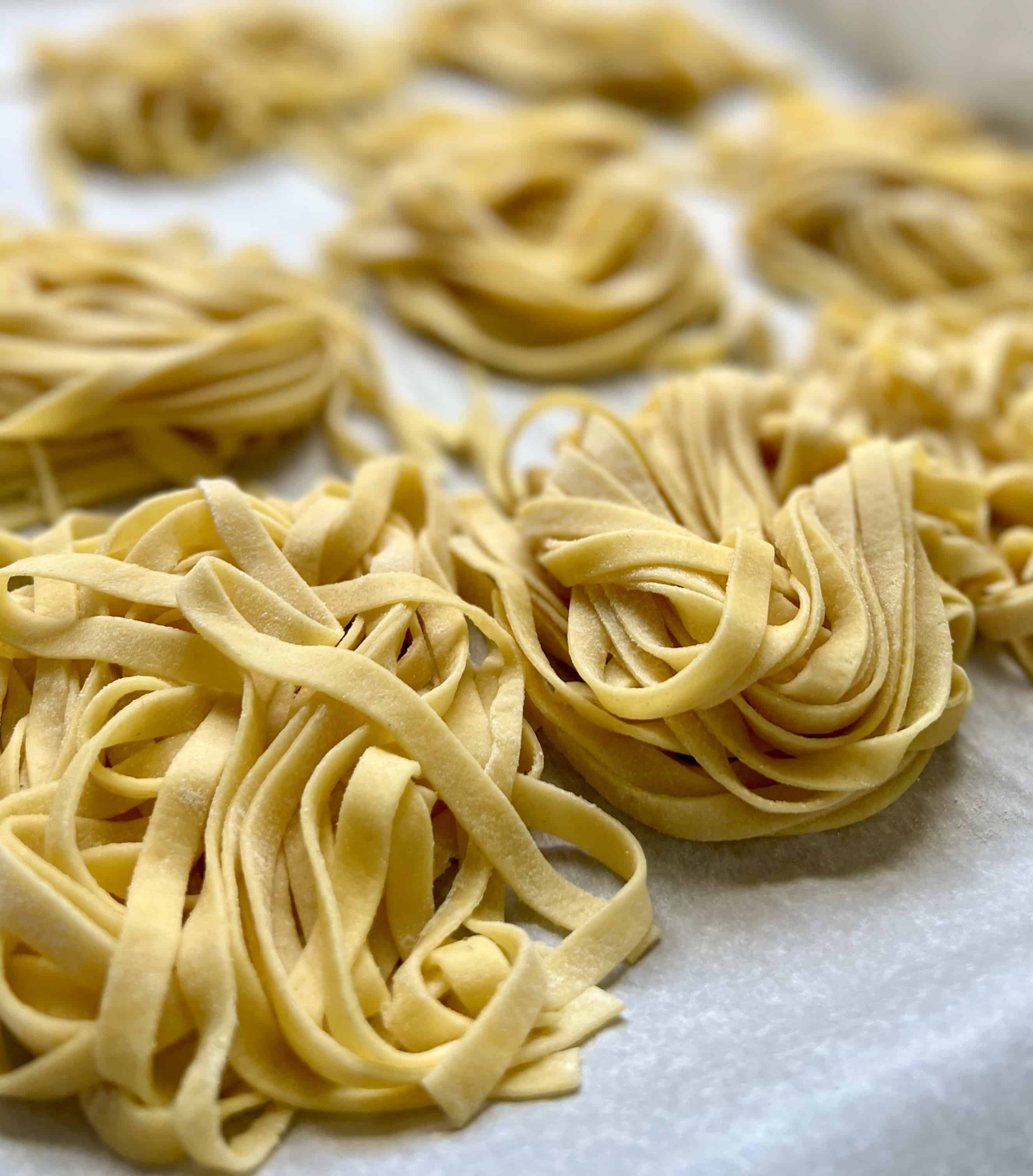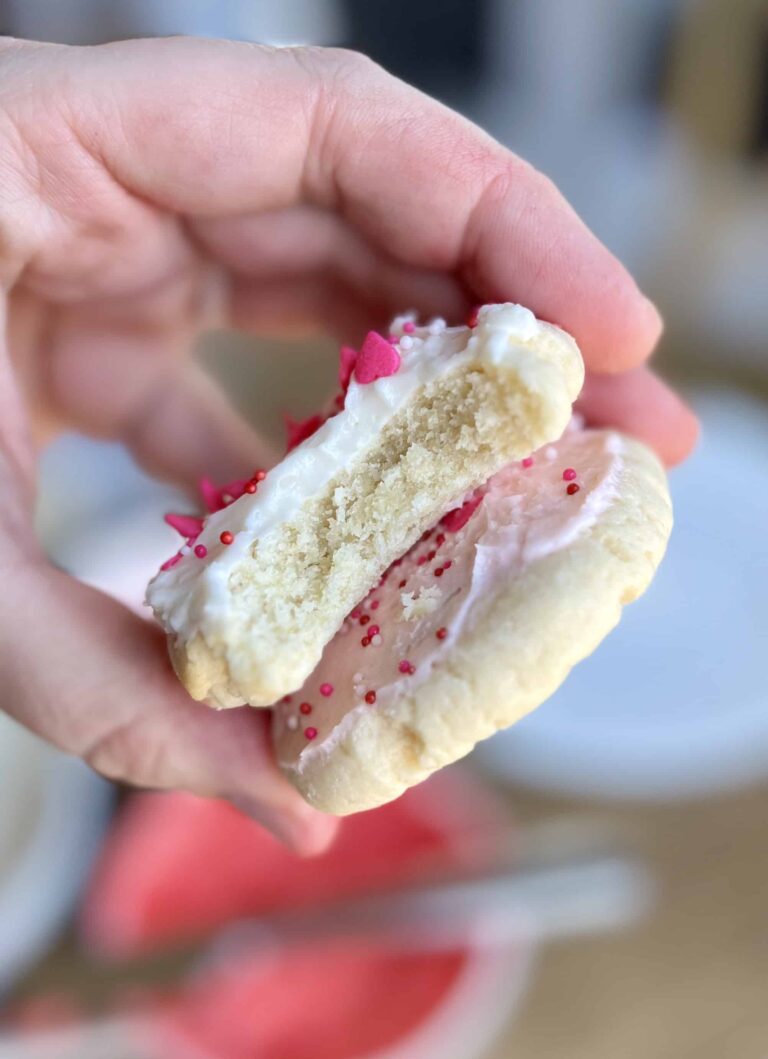Sourdough Discard Pasta
This post may contain affiliate links. Please read our disclosure policy.Making homemade pasta may seem intimidating at first, but the satisfaction of enjoying fresh, delicious noodles made from scratch is well worth the effort. If you’re looking to take your pasta-making game to the next level, consider using this recipe with sourdough discard in your dough. Not only is sourdough discard pasta a great way to use up excess starter, but it’s also a unique and tasty twist on traditional pasta. In this article, we’ll go over a step-by-step guide on how to make homemade sourdough discard pasta, and some tips for ensuring your noodles turn out perfectly every time. My kids cheer whenever they see homemade pasta on the table, so get ready to impress your family and friends with this delicious homemade sourdough discard pasta!

Important Ingredients in Sourdough Discard Pasta
- Sourdough Discard: I use 100% hydration sourdough discard in discard recipes. You can use fresh, bubbly sourdough starter or starter that’s been in your refrigerator for a week.
- Semolina Flour OR Bread Flour: Semolina flour is a high gluten flour that is made from hard durum wheat and is high in protein. It makes the pasta dough strong and elastic and also gives some of the yellow color to the pasta. Bread flour also has a high protein content and can be used in this recipe instead of semolina. You choose which you prefer to use.
- Type 00 Flour: This is a very soft and finely ground Italian flour. I love using it for pizza dough and in this pasta. If you don’t have 00 flour on hand, you can substitute all purpose flour or bread flour.
- Eggs: Eggs add richness, extensibility and the golden yellow color to the pasta dough.
- Olive Oil: A little bit of olive oil makes the dough smoother and easier to knead. It also adds some flavor to the pasta dough.
- Salt: Salt gives needed flavor to the pasta dough. Don’t leave it out.

How to Make Sourdough Discard Pasta
Mix Together Sourdough Pasta Dough
When it comes to making homemade sourdough discard pasta, mixing the dough can be a bit challenging, but it’s worth the effort. This pasta dough recipe requires less liquid than other doughs, which helps the pasta hold its shape when boiled. To make the dough, mix all of the ingredients together in a bowl with your hands. Alternatively you can use a stand mix to knead the dough for the first 7-8 minutes and finish it off by hand for a minute of two until smooth. If the dough is crumbly, add a teaspoon or two of water as needed. Knead the dough for 8-10 minutes until it forms a smooth ball. While it is an arm workout, the end result is a delicious, homemade pasta that will make any meal special.




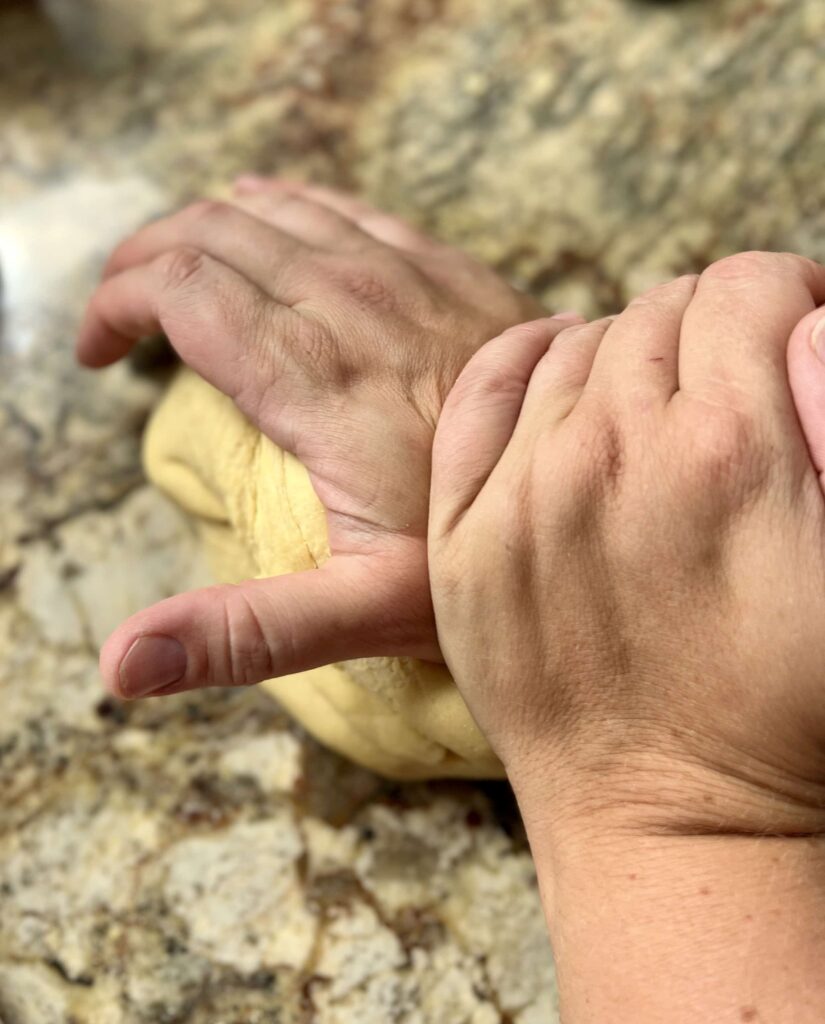
Let Sourdough Pasta Dough Rest
Wrap the smooth ball of dough in plastic wrap and let it sit on the counter for about an hour. This allows the gluten in the dough to fully relax. Keep the dough wrapped at room temperature for up to 6 hours or after kneading, stick the dough in the refrigerator for a day or two. When you decide to use it, let it come back to room temperature before separating it into strands of pasta.
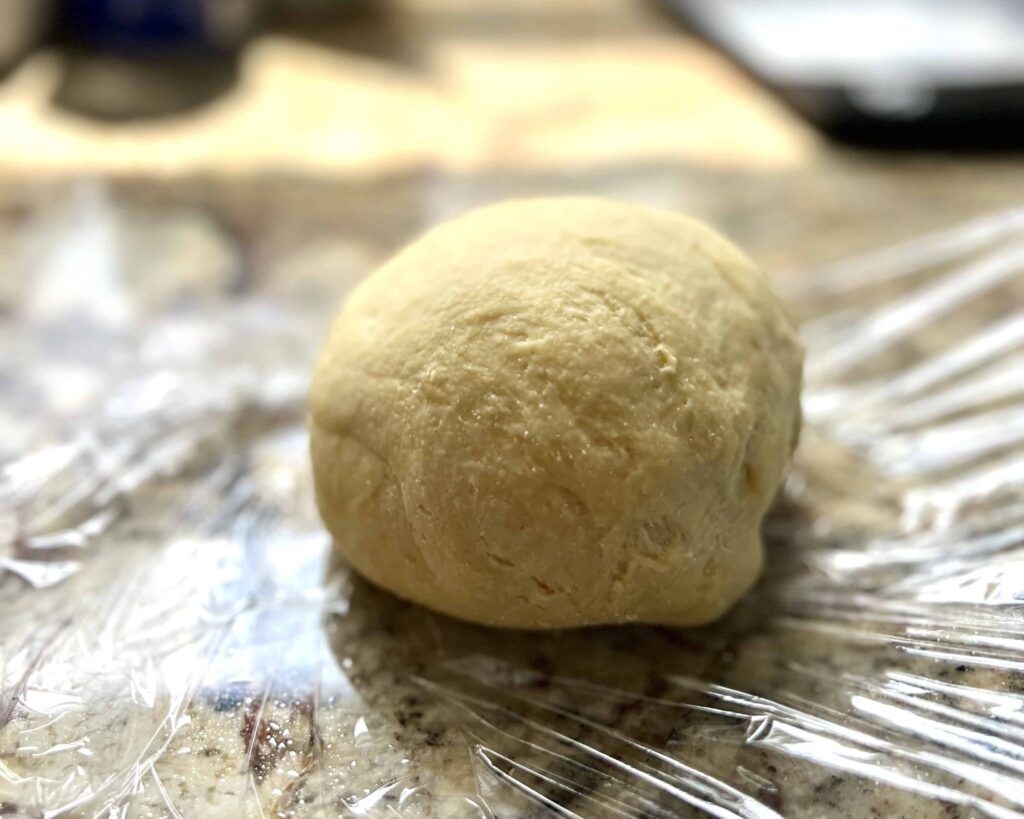

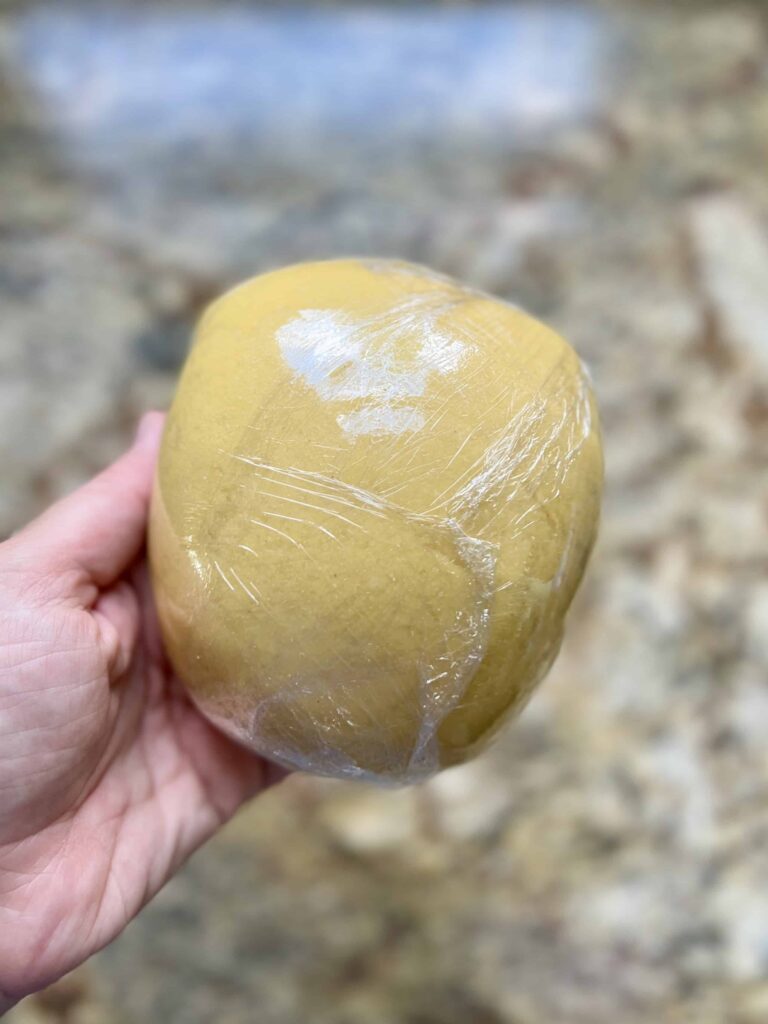
Roll and Cut Pasta
This sourdough pasta works well rolling and cutting by hand OR with a pasta machine or pasta attachment. You can roll it very thin and cut it into long strands for a rough pasta if you want to make it and don’t have an attachment, or someone to borrow one from. I recommend rolling as thinly and evenly as you can. I do love using the KitchenAid attachments for pasta with this recipe. It makes rolling out the pasta so simple and then cutting it into noodles.
Instructions for Rolling By Hand:
- Cut the dough into 4 equal sections. Dust some flour on your counter and use a rolling pin to roll the dough out into a rectangular shape.
- Let the dough rest for a minute. Take the rolling pin and roll the dough even thinner. The goal is to get the dough very thin. Continue flouring the dough and rolling until you can see your hand underneath the pasta dough if you lift it up, but it shouldn’t be paper-thin.
- Use a pizza cutter or sharp knife to cut the dough into long strands of noodles.
Instructions for using Pasta Machine:
- Cut the dough into 4 equal sections. Dust some flour on your counter and use a rolling pin to roll the dough out into a rectangular shape.
- Run a section of flattened pasta through the KitchenAid pasta sheet attachment on setting 1. Change the setting to 3 and run the pasta sheet through the pasta roller again. The pasta sheet will double in size. Repeat the process on setting 4. Cut the pasta sheet in half if needed and place on a floured piece of parchment paper or baking sheet. The flour helps keep the pasta sheets from sticking together if they overlap. Repeat with the remaining sections of dough until all of the dough is flat and ready to be cut.
- Change out the pasta attachment for the spaghetti or fettuccine attachment. Run each pasta sheet through the attachment, cutting the sheet into strips. As the pasta comes out of the machine, hold it in the middle, twist and form a little “nest” of pasta. Place it on lightly floured parchment paper or a baking sheet. Repeat until all of the pasta has been cut. At this point you can refrigerate or freeze the cut pasta for up to a day.
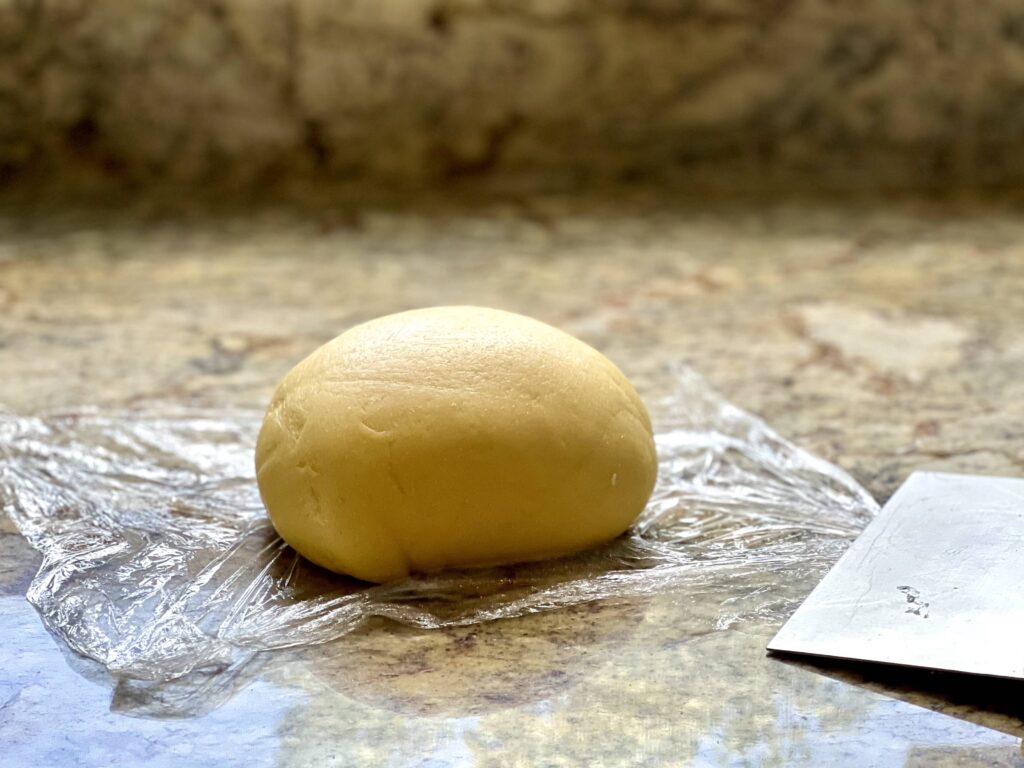

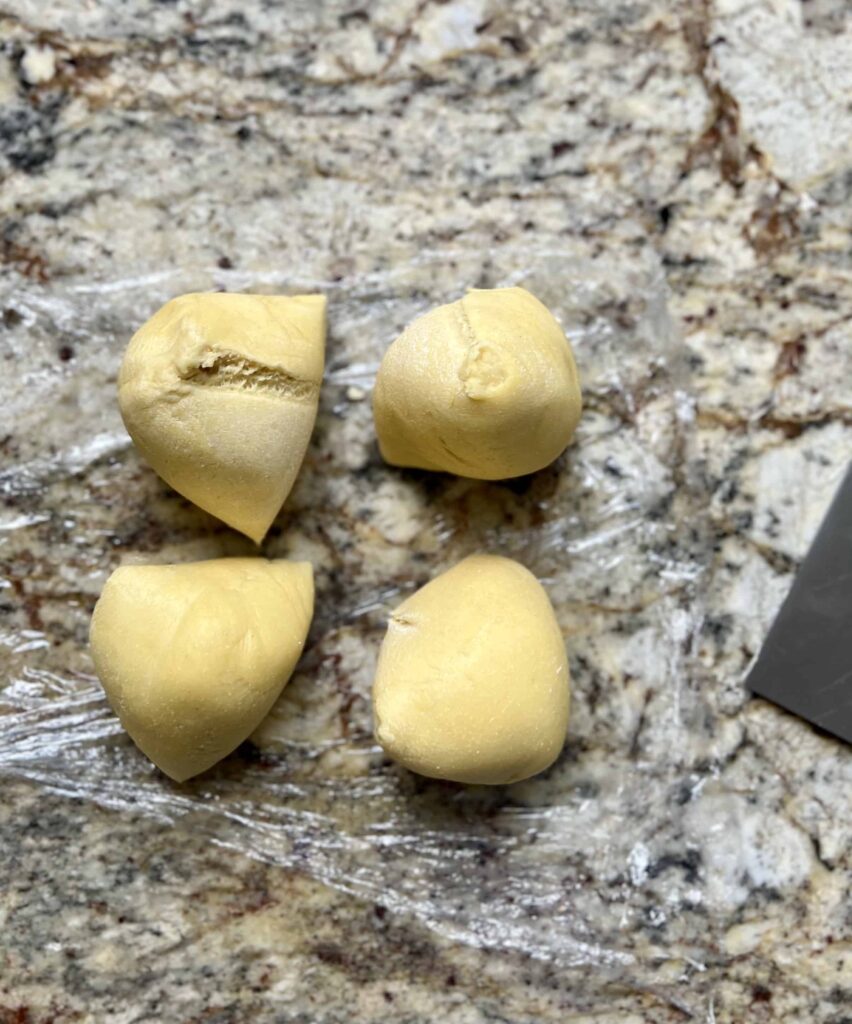

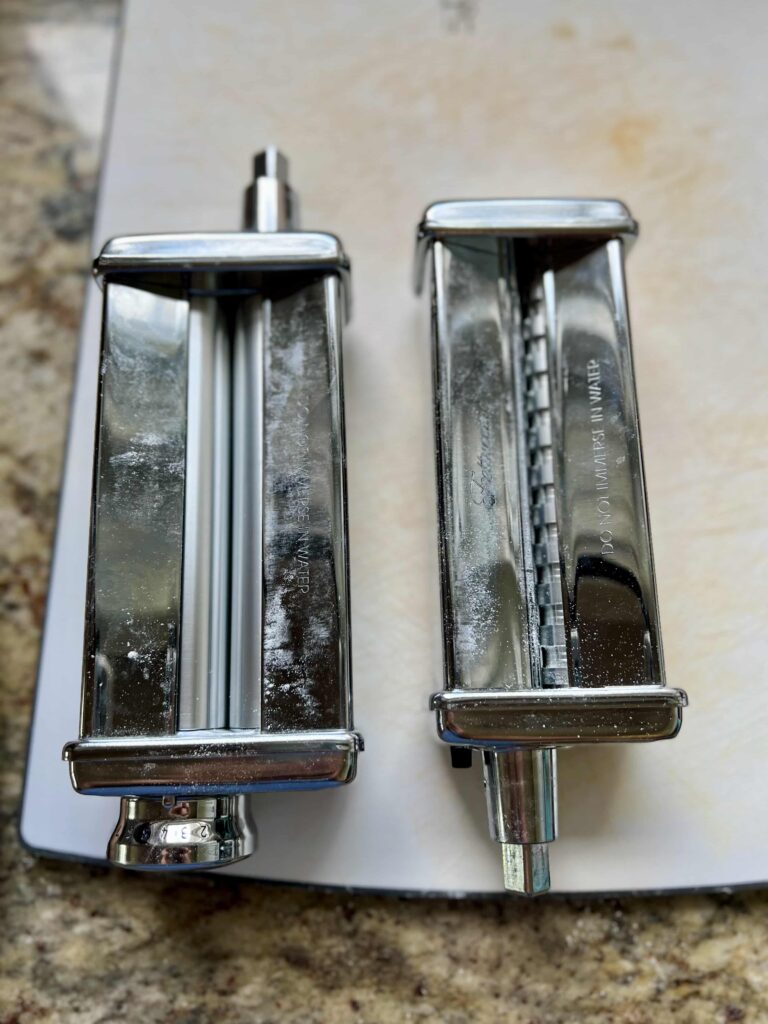
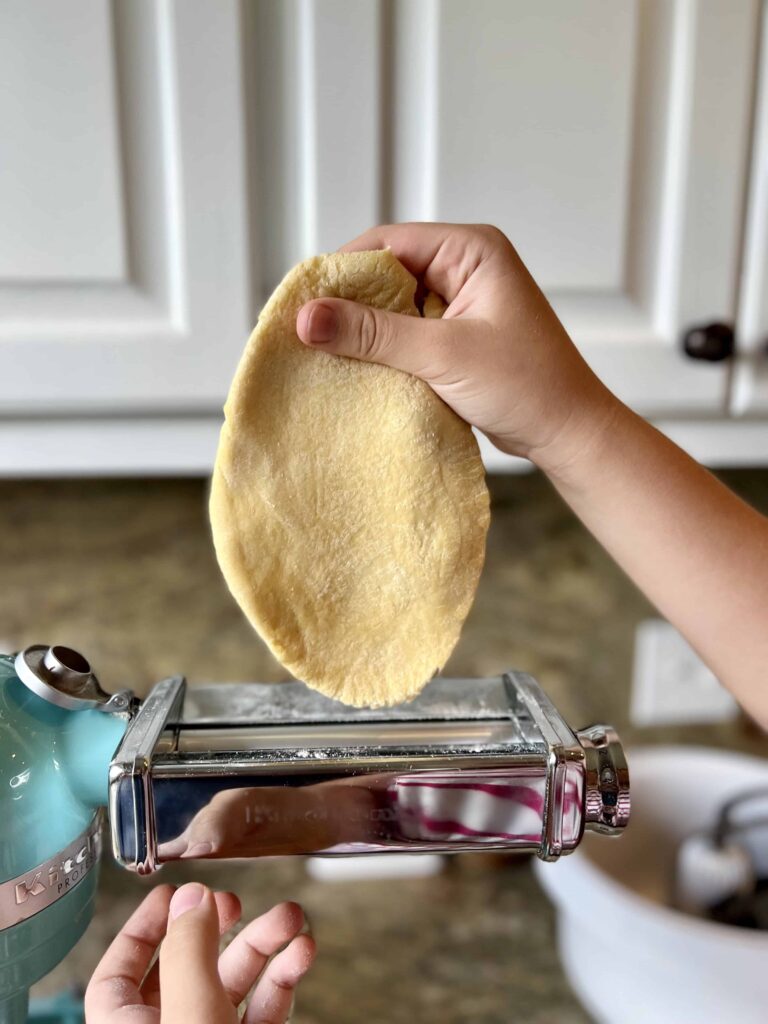
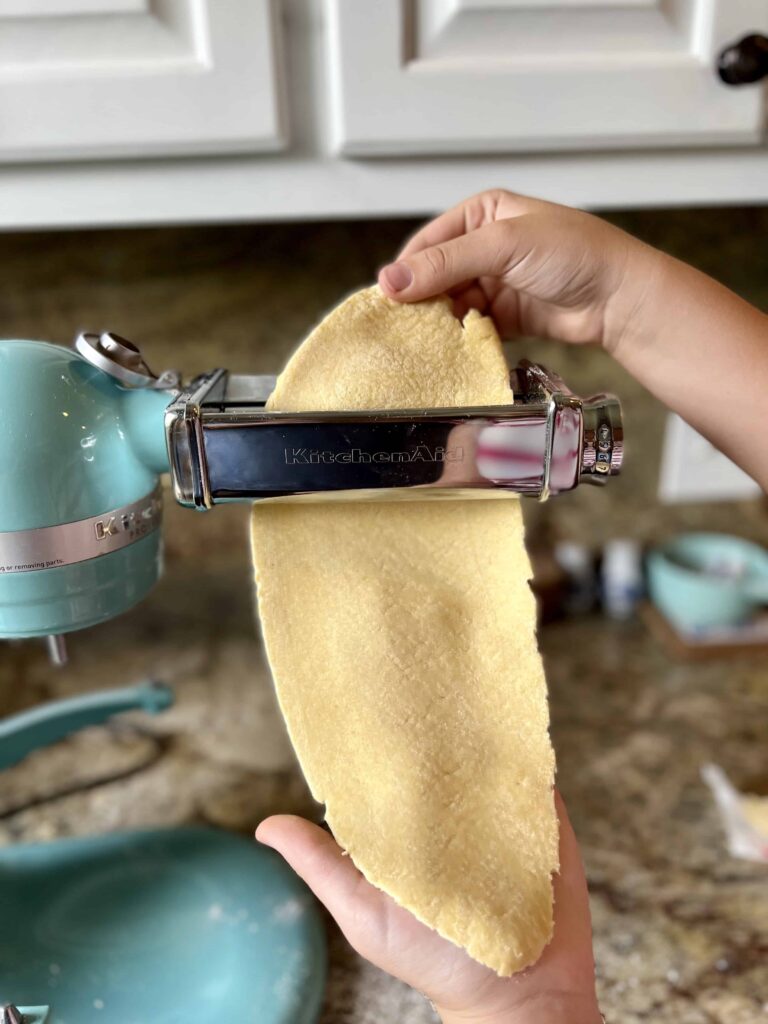
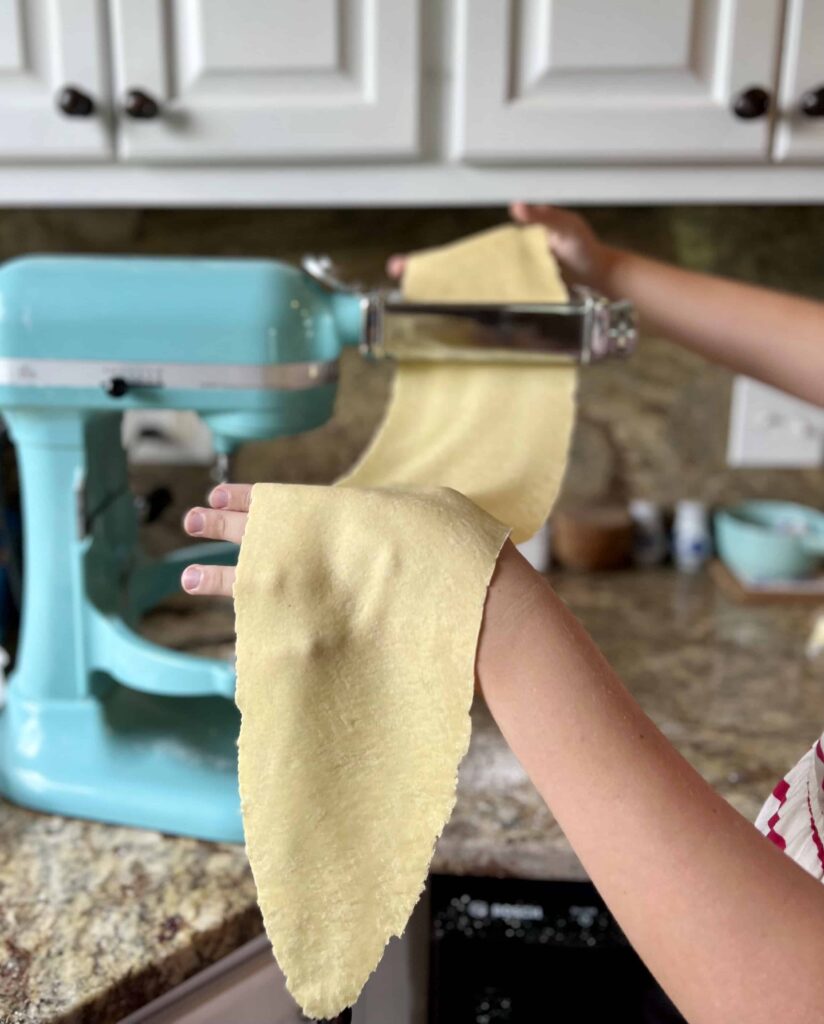
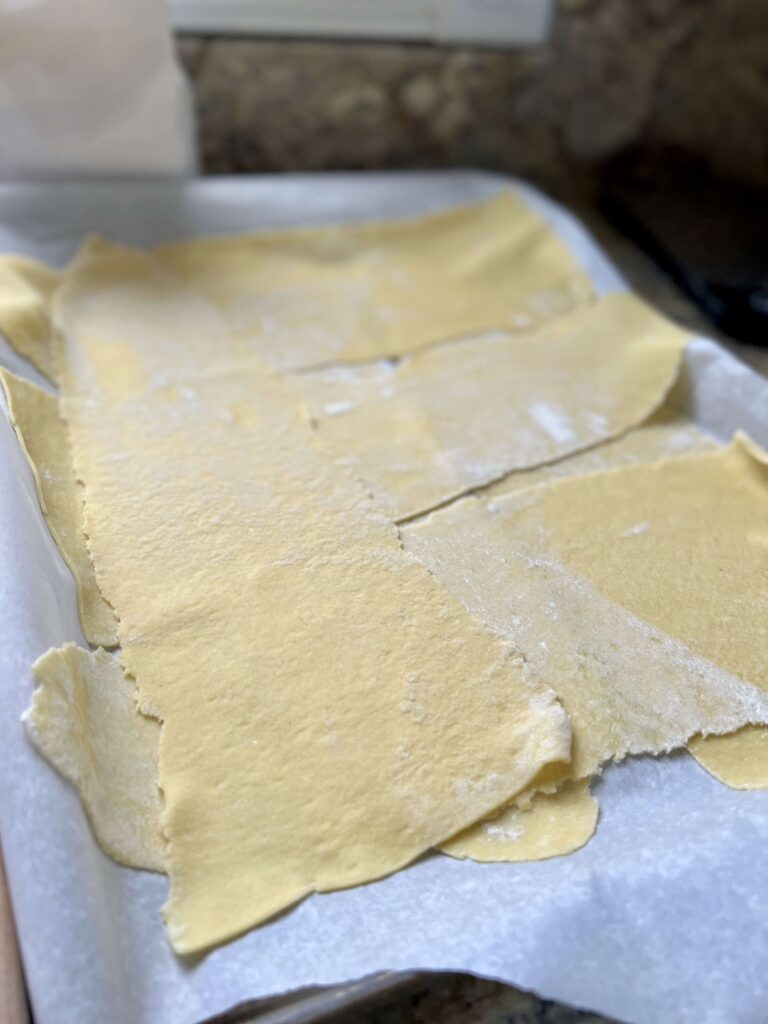

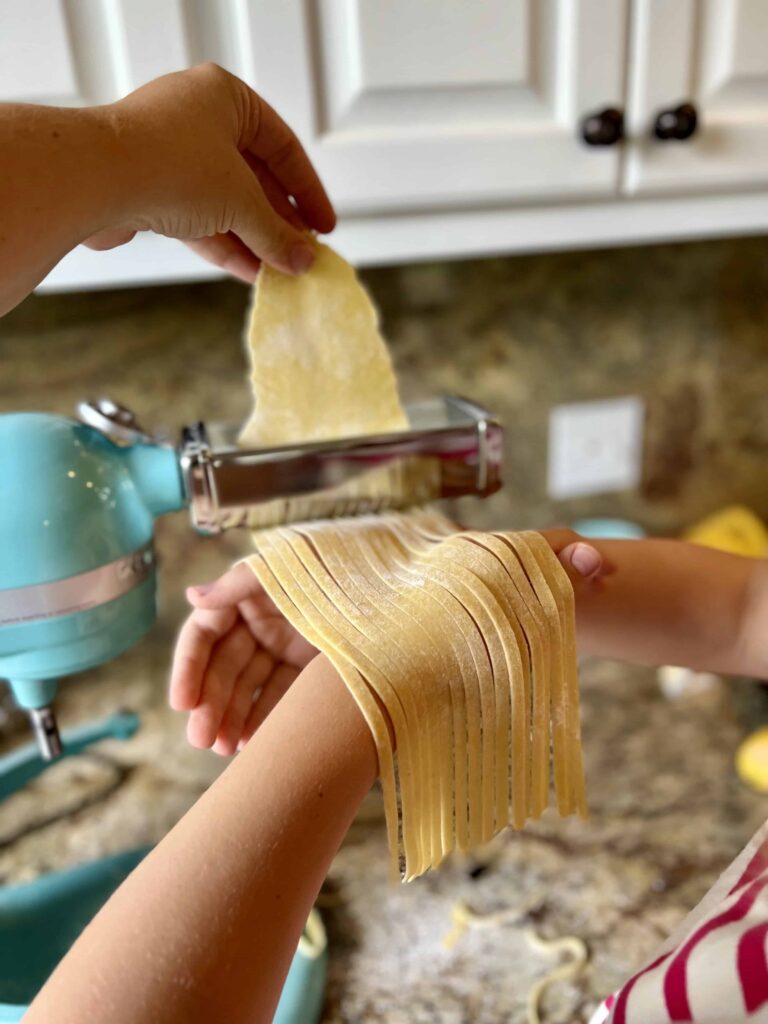
Boil and Serve Sourdough Pasta
Bring a pot of water to a boil. Salt the water generously and place one of the nests of pasta in the boiling water. If the noodles stick together at all, use tongs or a slotted spoon to gently swirl the pasta around, separating the strands in the water. Cook for a little over 1 minute until the pasta is al dente and floats in the water. Anything over 2 minutes and the pasta can become mushy, so watch carefully. Repeat with the other nests of pasta. Add sauce to your pasta and enjoy!

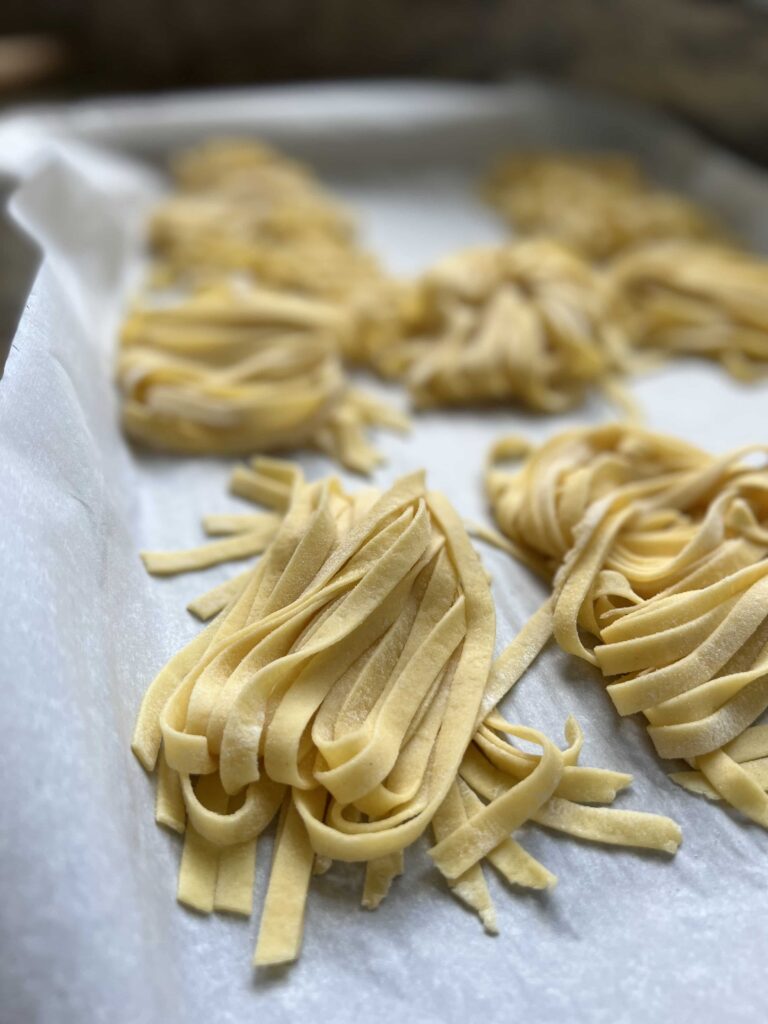
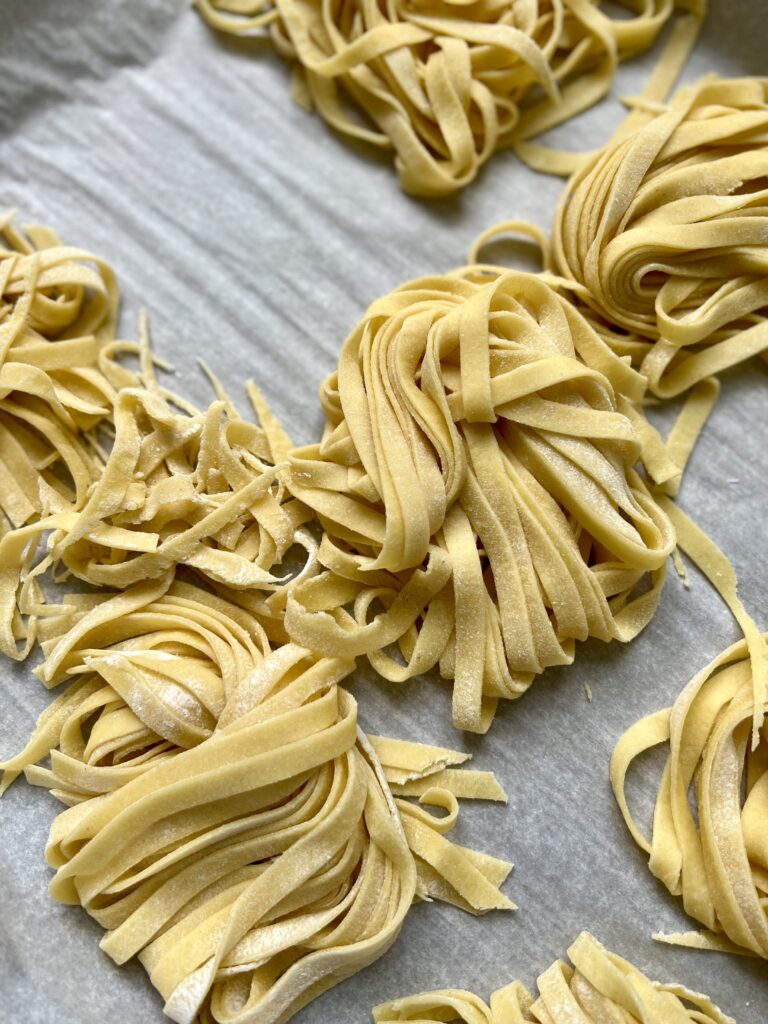
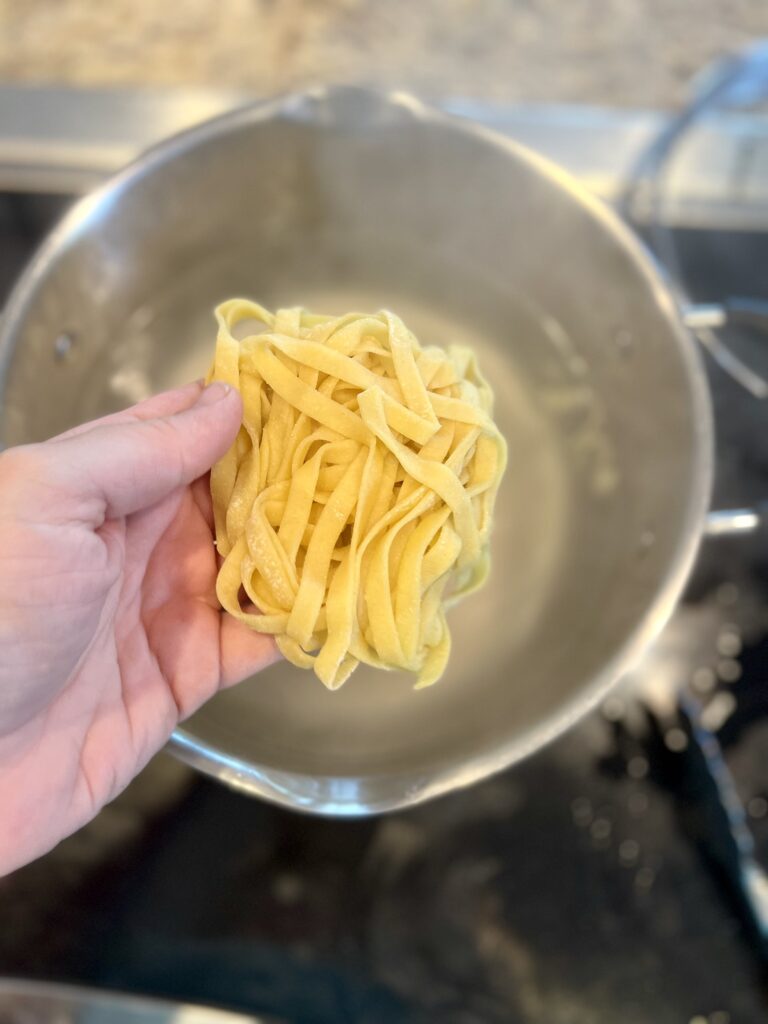
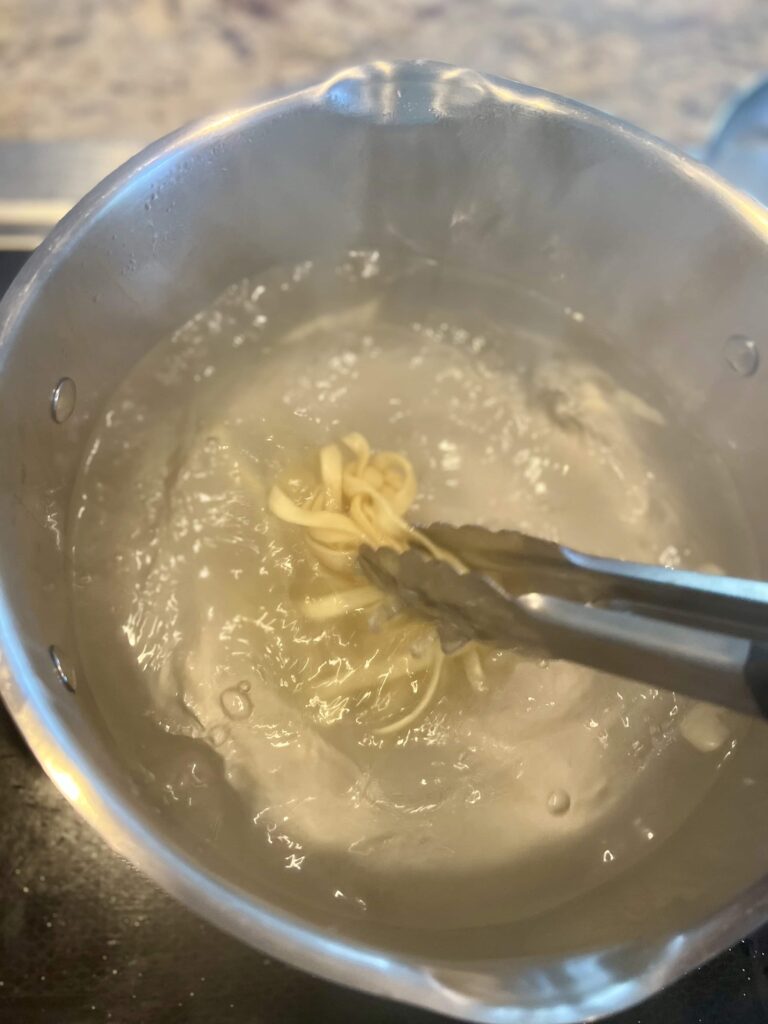

I love topping homemade pasta with a homemade sauce. Some of my favorites: brown butter, pesto, parmesan cream…the possibilities are endless!
Amy’s Recipe Tip
As soon as your drop the pasta in the boiling water, break it up with a slotted spoon or tongs. This keeps the pasta from sticking together. Remove pasta from the boiling water and coat immediately with sauce.
Substitutions
- Semolina and 00 Flour: You can substitute bread flour (12.5% protein content) for the semolina and 00 flour. Substitute 350 grams of bread flour for the flour in the recipe.
- Sourdough Discard: You can substitute ripe, active sourdough starter for sourdough discard in this recipe.
If you love this recipe, you’ll also love…
Frequently Asked Questions
You can substitute all purpose or bread flour. Type 00 flour is becoming easier to find in the U.S. and I can even grab a bag at my local grocery store now, so definitely pick up a bag or order it online if you want to make delicious pasta and pizza.
No. You don’t have to use only semolina. I think semolina flour gives really good results in this recipe. Semolina flour has a high protein content (about 13%) and is made from durum wheat. It is perfect for making pasta because of its high gluten content and it gives the pasta a nice yellow color. If you want to make this pasta without semolina, you can also substitute bread flour for ALL the flour in the recipe (you won’t need to use 00 flour). It works really well.
As with any sourdough discard recipe, make sure the sourdough discard you are using is not more than a week old for best flavor. The amount of discard in this recipe is not overpowering. If you want more of a tang, let the pasta sit in the refrigerator for a day or two. This gives time for the pasta to ferment and will give a more overt sourdough flavor.
This pasta can be rolled out thinly by hand and then cut with a pizza cutter or sharp knife into pieces. Cut it into four pieces and roll each piece out into a large rectangle. Use a pizza cutter or sharp knife to cut long, thin strands of pasta.
Pasta nests that have not been boiled can be frozen for about six months. Place in a ziplock bag and freeze. To cook, add a few extra minutes to boiling time. Leftover pasta that is cooked can be put in an airtight container in the fridge for a few days.
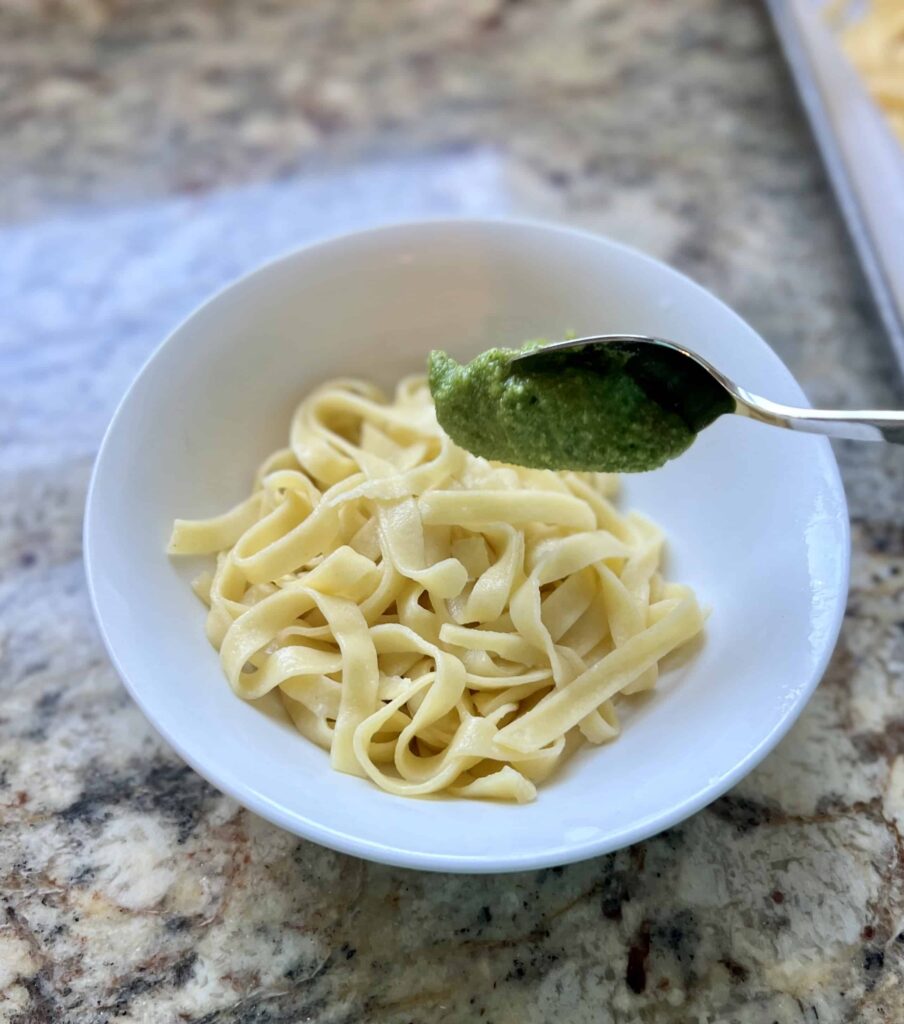
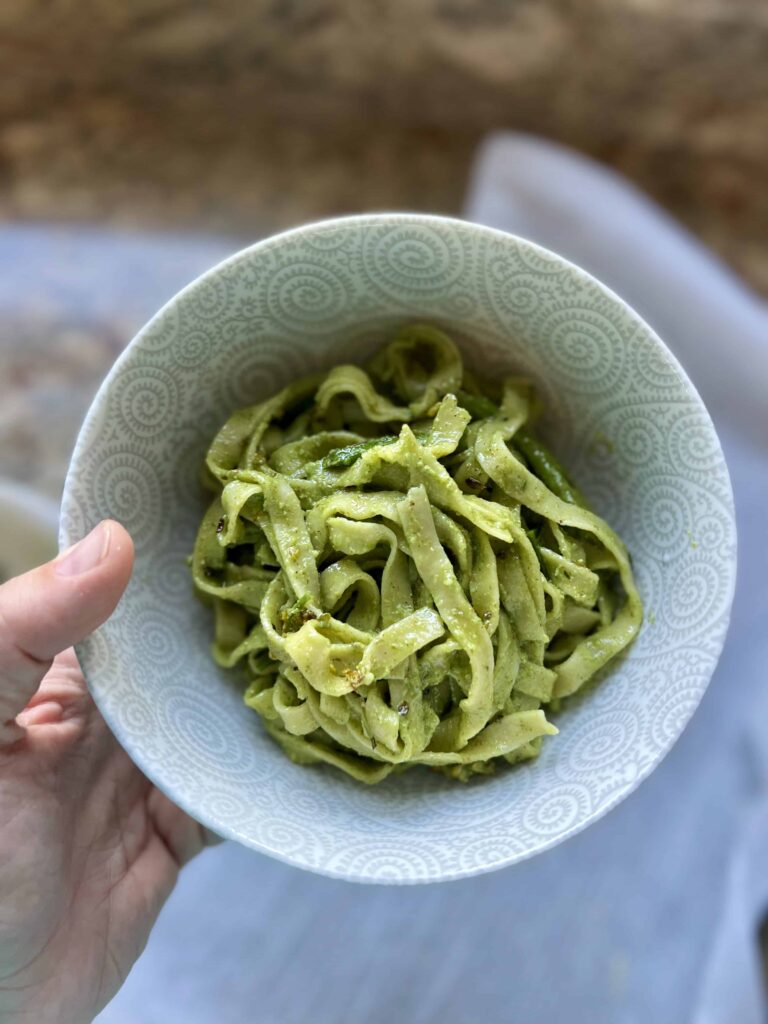

Sourdough Discard Pasta
Ingredients
- 250 grams semolina flour OR bread flour see recipe notes
- 100 grams type 00 flour OR bread flour see recipe notes
- 10 grams salt
- 100 grams sourdough discard 100% hydration
- 2 large eggs about 110 grams
- 17 grams olive oil
- 35 grams water
Instructions
Sourdough Discard Pasta
- To a medium sized bowl add the flour, salt, sourdough discard, eggs, olive oil and water. Mix together with your hands until you form a stiff ball of dough. The dough should not be crumbly (if it is, add another teaspoon or two of water) or sticky (if it is, add a Tablespoon or so of flour at a time as needed). Alternatively you can add all the ingredients to a stand mixer and knead together.
- Kneading by hand: Take the palm of your hand and press down in the middle of the dough. Fold it over and repeat the process. Knead for about 10 minutes until a smooth ball forms. Kneading with a mixer: Knead for 7-8 minutes until a smooth ball forms.
- Wrap the ball of dough completely in plastic wrap and set aside for an hour. At this point you can also refrigerate the dough for up to a couple days. If you choose to refrigerate the pasta dough, bring it back to room temperature before proceeding with the recipe.
- Prepare a pasta rolling machine and rolling pin. I use these pasta attachments that are compatible with a KitchenAid mixer. Cut the dough into 4 equal sections. Dust some flour on your counter and use a rolling pin to roll the dough out into a rectangular shape.
- Rolling Pin Instructions: Flour the countertop and roll the dough out into a thin rectangle shape. If the dough shrinks up, let it rest for a minute and then roll again. The goal is to get the dough very thin. Continue flouring the dough and rolling until you can see your hand through the pasta dough if you lift it up. Use a pizza cutter or sharp knife to cut the dough into long strands of noodles.
- Pasta Machine Instructions: Run a section of flattened pasta through the KitchenAid pasta attachments on setting 1. Change the setting to 3 and run the pasta sheet through the pasta roller again. The pasta sheet will double in size. Repeat the process on setting 4. Cut the pasta sheet in half if needed and place on a floured piece of parchment paper or baking sheet. The flour helps keep the pasta sheets from sticking together if they overlap. Repeat with the remaining sections of dough until all of the dough is flat and ready to be cut.Change out the pasta attachment for the spaghetti or fettuccine attachment. Run each pasta sheet through the attachment, cutting the sheet into strips. As the pasta comes out of the machine, hold it in the middle, twist and form a little "nest" of pasta. Place it on lightly floured parchment paper or a baking sheet. Repeat until all of the pasta has been cut. At this point you can refrigerate or freeze the cut pasta for up to a day.
- Bring a pot of water to a boil. Add salt and drop the pasta in the boiling water. If the noodles stick together at all, use tongs or a slotted spoon to gently swirl the pasta around, separating the strands in the water. Cook for a little over 1 minute until the pasta is al dente and floats in the water. Anything over 2 minutes and the pasta can become mushy, so watch carefully.
- Add your favorite pasta sauce or a little butter and parmesan and coat liberally. Enjoy!

